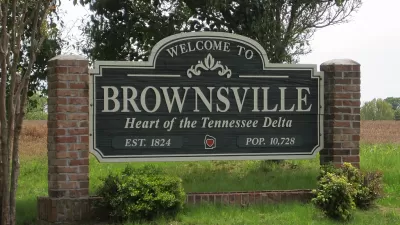In the United States, homeownership has long been touted as a sign of personal success and national prosperity. But a comparison of homeownership levels to economic health across 41 countries shows an inverse correlation.

Using data from Pew and the World Bank, Richard Florida and Charoltta Mellander have reached some surprising findings regarding homeownership and economic development.
Their research indicates that "[l]ess developed countries have consistently higher levels of homeownership, while more advanced nations combine higher levels of economic development with substantially lower levels of homeownership." For example, Switzerland, "which has the lowest rate of homeownership among the countries Pew studied, is one of the the world's richest and most advanced countries..." While less-developed Eastern European nations like Slovakia and Lithuania have some of the highest homeownership levels.
"American political rhetoric tends to equate rising homeownership rates with strong economic development," adds Florida. "Instead, the opposite is true. The rate of homeownership declines as nations get wealthier."
FULL STORY: Why the U.S. Needs to Fall Out of Love With Homeownership

Americans May Be Stuck — But Why?
Americans are moving a lot less than they once did, and that is a problem. While Yoni Applebaum, in his highly-publicized article Stuck, gets the reasons badly wrong, it's still important to ask: why are we moving so much less than before?

Using Old Oil and Gas Wells for Green Energy Storage
Penn State researchers have found that repurposing abandoned oil and gas wells for geothermal-assisted compressed-air energy storage can boost efficiency, reduce environmental risks, and support clean energy and job transitions.

Placekeeping: Setting a New Precedent for City Planners
How a preservation-based approach to redevelopment and urban design can prevent displacement and honor legacy communities.

San Francisco’s Muni Ridership Grew in 2024
The system saw its highest ridership since before the Covid-19 pandemic, but faces a severe budget shortage in the coming year.

Colorado Lawmakers Move to Protect BRT Funding
In the face of potential federal funding cuts, CDOT leaders reasserted their commitment to planned bus rapid transit projects.

Safe Streets Funding in Jeopardy
The Trump administration is specifically targeting bike infrastructure and other road safety projects in its funding cuts.
Urban Design for Planners 1: Software Tools
This six-course series explores essential urban design concepts using open source software and equips planners with the tools they need to participate fully in the urban design process.
Planning for Universal Design
Learn the tools for implementing Universal Design in planning regulations.
Heyer Gruel & Associates PA
City of Moreno Valley
Institute for Housing and Urban Development Studies (IHS)
City of Grandview
Harvard GSD Executive Education
Salt Lake City
NYU Wagner Graduate School of Public Service
City of Cambridge, Maryland





























